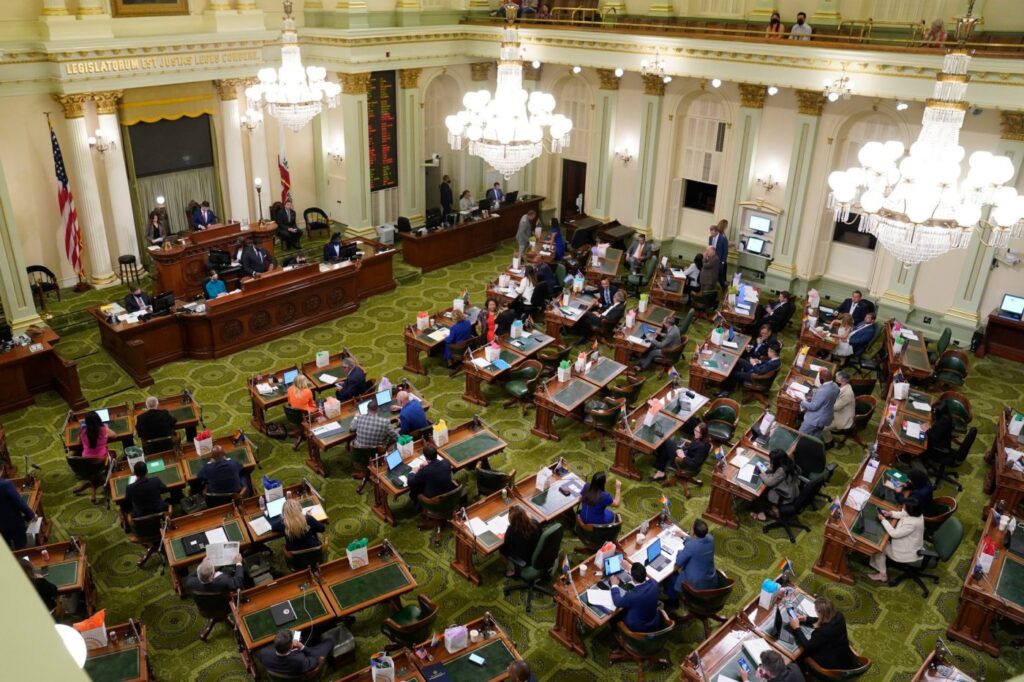
In their latest attempt to circumvent Proposition 13, California state legislators have voted to place a constitutional amendment on the ballot that will make it easier for local governments to raise taxes. Like previous measures, ACA-1 appears to be motivated by a belief that Proposition 13 straitjackets the public sector in a way that renders it unable to fully meet residents’ needs. But the data suggest that California governments have plenty of money.
According to the Census Bureau, California state and local governments collected $988 million in Fiscal Year 2021, the latest year for which data were available. This represented 29.6 percent of the state’s GDP. Revenue figures in 2021 were pumped up by investment gains at CalPERS, CalSTRS and other public pension systems. Census figures show total government spending that year of $743 billion or 22.3 percent of GDP.
In the current fiscal year, the state alone expects to spend $455 billion of tax and service charge revenues as well as federal grants. Among local governments, Los Angeles County has the largest budget at $43.4 billion. Other major counties that have hefty spending plans are Santa Clara ($10.6 billion), Orange ($9.3 billion), and San Diego ($8.2 billion). Among cities, San Francisco (which is also a county) plans to spend $14.6 billion followed by Los Angeles ($13 billion), San Diego ($5.2 billion), and San Jose (also $5.2 billion). Because state and local governments are expected to balance their books, these spending totals approximate anticipated revenue.
These numbers show that California governments do not have a revenue problem despite Proposition 13’s remaining restrictions. But legislators believe that it should be easier for cities and counties to raise taxes, so ACA 1 reduces the threshold for approving revenue measures from 66.7 percent to 55 percent, as long as proceeds are used “for the purposes of funding the construction, reconstruction, rehabilitation, or replacement of public infrastructure, affordable housing, including downpayment assistance, or permanent supportive housing, or the acquisition or lease of real property for those purposes.” Aside from making it easier to raise sales taxes, real estate transfer taxes, and parcel taxes, ACA-1 also lowers the threshold for approving bonds which are serviced through additional property taxes.
Although ACA 1 circumscribes the purposes to which the newly approved tax revenue can be applied, it is worth remembering that government spending is quite fungible. A city could cut its existing spending on affordable housing to address other budget priorities and then offset that cut with revenues from a newly approved tax.
It is also worth noting that California governments have been spending a lot on homelessness and affordable housing recently but with little to show for it. In 2016, 77 percent of Los Angeles voters approved measure HHH authorizing $1.2 billion of bonds to fund affordable housing. Five years later, the city had only built 1200 unitsat costs ranging as high as over $800,000 per unit.
Related Articles
Susan Shelley: California needs oil and gas, and it’s a costly fantasy to pretend otherwise
Bidenomics isn’t achieving its promises
Judge Andrew Napolitano: Donald Trump is his own worst enemy
Are ordinary Americans buying ‘Bidenomics’?
A blow to liberty: Hong Kong is no longer No. 1 in economic freedom
When ACA-1 is placed before the voters sometime in 2024, proponents will likely emphasize the fact that any local government adopting new taxes or bonds with a 55 percent approval threshold must create an independent citizen’s oversight committee to oversee the use of proceeds. This sounds good in theory but is virtually meaningless in practice, as shown by the experience of committees previously constituted to oversee K-14 bond spending. These oversight committees are paper tigers with little power and little inclination to use what little leverage they have. The information they review comes from the government’s staff and taxpayer advocates on the committee are typically outnumbered by insiders and beneficiaries of the new spending.
Despite Proposition 13 limits, California governments have plenty of money to address homelessness, provide public safety, and accomplish other basic functions. Before making it easier for cities, counties and special districts to collect even more money from taxpayers, voters should consider whether existing revenue is being used effectively.
Marc Joffe is a federalism and state policy analyst at the Cato Institute.
